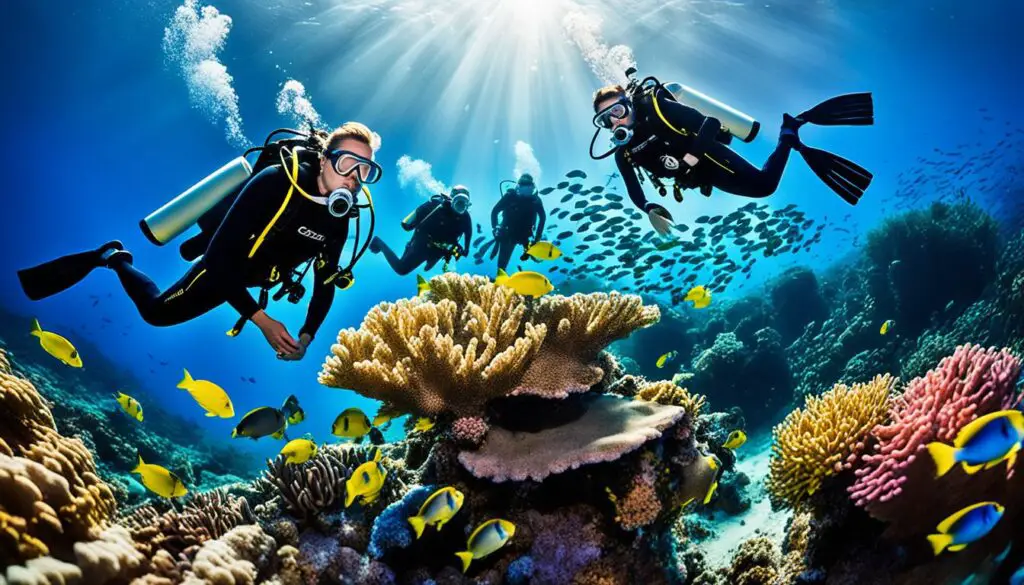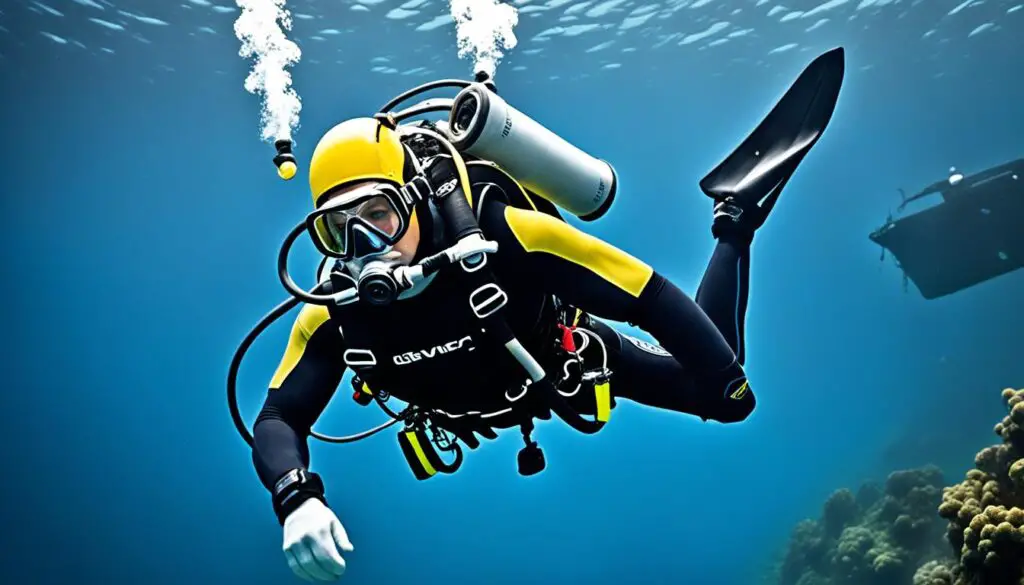Ever thought about learning to scuba dive? This guide will walk you through all the steps to becoming a certified scuba diver. First up is the Open Water Diver course, offering a certification after you complete it successfully. This certification lets you fill air tanks, rent gear, and join diving trips worldwide.
In the Open Water Diver course, you’ll pick up the basics: setting up your gear, handling marine life, and managing your air. You can take some learning online for free or dip your toes in with a Discover Scuba Diving® Experience before committing. Being comfortable in the water and knowing how to swim are essential for diving. But, don’t worry if you have physical challenges – there are ways to adapt for you. To get started, you’ll need a wetsuit or dry suit, a tank, a BCD, a regulator, and a few more items. Prices for certification courses vary depending on location and some other factors. Checking out PADI Adventures is a great way to begin your journey and find diving opportunities around the globe.
Key Takeaways:
- Dive guides and scuba certification are must-haves for new divers wanting to see the underwater world.
- The Open Water Diver course is your entry point to scuba certification.
- After getting certified, you can rent equipment and book dives across the world.
- Jumpstart your lessons online and think about giving Discover Scuba Diving® a go.
- There are ways to make scuba diving work for those with physical limitations.
Steps to Becoming a Certified Scuba Diver
Becoming a certified scuba diver is both exciting and rewarding. You need to follow these essential steps:
1. Consider Your Learning Preferences
Think about how you like to learn before starting scuba training. Do you learn better in a private class or with a group? Choosing the right environment is key to your success.
2. Choose Your Scuba Training Location
Decide where you want to train. You can choose from:
- Training close to home
- Starting at home and finishing on vacation (Open Water Referral)
- Learning to dive in a different location
Choose what fits with your schedule, budget, and scuba dreams.
3. Duration and Content of the Scuba Certification Course
A scuba certification course lasts 4-7 days. It includes learning about scuba gear, terms, and key diving skills. You can do the theory part online through PADI eLearning.
4. In-Water Training
Training in the water is essential for your scuba certification. You’ll practice important skills in locations like a pool. This includes how to handle a flooded mask and improve your buoyancy.
5. Open Water Dives
Open water dives let you use your scuba skills in real dives. You’ll get to see amazing underwater life. These dives are the highlight of your training.

6. Certification and Beyond
After you pass the course, you’ll get a scuba certification. With this, you join a global community of divers. Your certification is for life and marks the start of your underwater adventures.
Now that you know the steps, what are you waiting for? Start your scuba training today.
Essential Beginner Scuba Skills
Being new to scuba diving means learning key skills. You’ll start with important basics like hand signals. These are vital for talking underwater. You’ll also learn to keep yourself steady in the water and what to do if your mask fills with water.
Hand signals: When diving, you can’t just talk like on land. So, divers use hand signals to understand each other. You’ll signal things like “OK” or “stop” with your hands. Making sure you know these well is all about being safe and smart underwater.
Buoyancy control: Balancing in the water is a big deal for divers. You use your BCD to add or let out air, floating or sinking as needed. Getting it right helps you move smoothly without touching the ocean floor. This keeps the underwater world safe and beautiful.
Mask clearing: No one likes a full mask underwater. Water can sometimes seep in, messing with your vision. To fix it, you simply blow out through your nose. Your instructor will show you how. It’s a quick fix to keep you seeing clearly.
Besides these, as a beginner diver, you should also learn:
- Recovering a regulator: If you lose your breathing device, you should understand how to get it back in fast. This ensures you keep breathing normally.
- Ascending safely: If low on air, being calm is very important as you rise to the surface. Moving too quickly can cause sickness. Always remember to ascend carefully following the rules you’ve been taught.
Practicing and mastering these skills will help keep you safe and enjoy diving adventures more.

| Skills | Description |
|---|---|
| Hand Signals | Used to communicate underwater, essential for scuba safety |
| Buoyancy Control | Adjusting air in BCD to maintain proper depth and balance |
| Mask Clearing | Technique to remove water from the scuba mask |
| Regulator Recovery | Retrieving and reinserting the regulator if knocked out of the mouth |
| Safe Ascending | Ascending safely in case of running out of air |
Conclusion
Congratulations on starting your scuba diving journey! Scuba diving lets you see the underwater beauty and have amazing adventures. With your scuba certification, you can dive worldwide and be part of a diver community.
Scuba diving changes your life, offering excitement and chances to meet sea creatures. As a new diver, you now have skills for future dives.
Getting certified means you can dive solo, rent equipment, and visit amazing dive spots. Dive anywhere, from close to home to distant waters.
Always keep safety first and learn good buoyancy. These are key for a fun and safe dive. Your scuba adventure will show you new sights and marine life. Enjoy the sea’s wonders as a certified diver and have the dive trip of a lifetime!
FAQ
What is the first scuba certification you can earn?
The first certification is Open Water Diver. You get it by finishing the Open Water Diver course.
What does a scuba certification allow you to do?
Getting certified lets you fill air tanks and rent gear. It also allows you to dive around the globe.
Are there adaptive techniques for individuals with physical challenges?
Yes, they’re adapting scuba diving for people with physical barriers.
What equipment is needed for scuba diving?
You need a wetsuit or dry suit, a scuba tank, a BCD, a regulator, and more.
How much does a scuba certification course cost?
The cost varies. It depends on where you take the course and other things.
What are the steps to becoming a certified scuba diver?
To get certified, first pick how you want to learn. Then, choose a place to train. Next is the theory, practice in water, and real dives.
How long does a scuba certification course typically take?
Most certification courses last 4-7 days.
What skills will I learn as a beginner scuba diver?
You will learn basic skills like using hand signals and managing your buoyancy. You also learn how to clear a mask and recover a lost regulator.
